CES 2022 – All info on QD OLED, Mini LED, Lifestyle TVs and more!
From January 5-8, 2022, CES® has returned to Las Vegas – this year as a hybrid event, after last year’s Consumer Electronics Show had to be purely digital due to the ongoing pandemic. During the CES, many manufacturers announce their new TV models for 2022, including technical innovations and of course the first glimpses of the upcoming models. Of course, new OLED TVs are are at the ready again this year, but Mini and Micro LED technology are also becoming more dominant on the TV market. And what about the new QD technology? What surprises still await us? Find out everything about CES 2022 here!

LG at CES 2022: Manufacturer focuses on greater OLED diversity
The Korean manufacturer LG also wants to show off new OLEDs at the CES in 2022. In addition to the name of the OLEDs in the 2022 lineup, new sizes have now been revealed. LG’s press conferences took place on January 4.

LG line-up: 42-inch to 97-inch OLEDs and new design OLED announced
Before CES 2022 even gets underway, the models of the new LG OLEDs have already been unveiled. The model codes were taken from a database of the Korean Radio Research Agency, where they were submitted for radio certification. Thus, the respective inch sizes were found out in addition to the model codes.
As before, the A1, B1, C1 and G1 model series will remain and the abbreviation 1 for 2021 has been replaced by a 2 for 2022. The new 42-inch size also joins the lineup, which will especially please gamers since they can now use a compact OLED with corresponding features as a monitor. Home theater fans will also be happy about the 97-inch LG OLED Evo G2. All known models can be found in the following table:
| LG OLED Lineup 2022 | 42 Inch | 48 Inch | 55 Inch | 65 Inch | 77 Inch | 83 Inch | 97 Inch |
|---|---|---|---|---|---|---|---|
| LG A2 | OLED48A2 | OLED55A2 | OLED65A2 | OLED77A2 | |||
| LG B2 | OLED55B2 | OLED65B2 | OLED77B2 | ||||
| LG C2 | OLED42C2 | OLED48C2 | OLED55C2 | OLED65C2 | OLED77C2 | OLED83C2 | |
| LG G2 | OLED55G2 | OLED65C2 | OLED77G2 | OLED83G2 | OLED97G2 |
LG unveils two new lifestyle TVs
LG recently introduced two additional new lifestyle TVs in South Korea. Together with the LG OLED Evo G1, the manufacturer now offers three different lifestyle TVs and thus offers a much broader range than the competitor Samsung. The new lifestyle TVs will probably also be present at CES 2022.
The first model is the LG 65ART90 or OLED Evo Object Collection in 65 inches and is characterized by its new shape, as well as a movable cover. The TV has a metal frame and can stand directly on the floor, lean against the wall or be mounted classically on the wall. The highlight is that the TV has a fabric cover in three different colors, which can be raised and lowered at the touch of a button to hide the display if desired.
In addition, the Art-OLED is supposed to have a 4.2 audio system installed with a total of 80 watts, so you can use it to listen to music and, for example, only get the time displayed on the upper part of the TV.
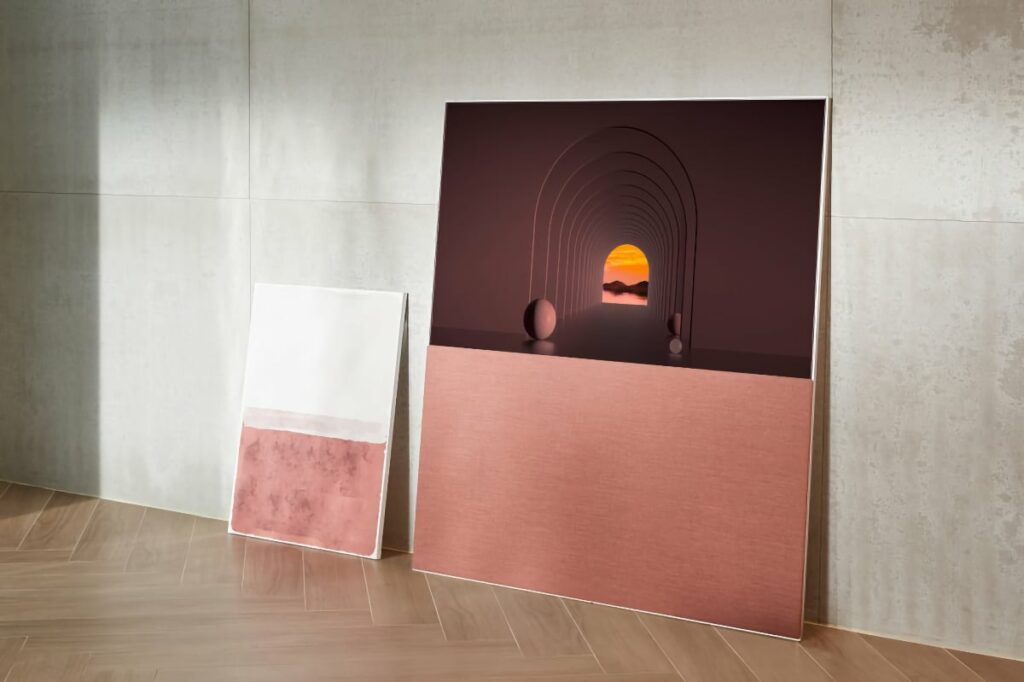
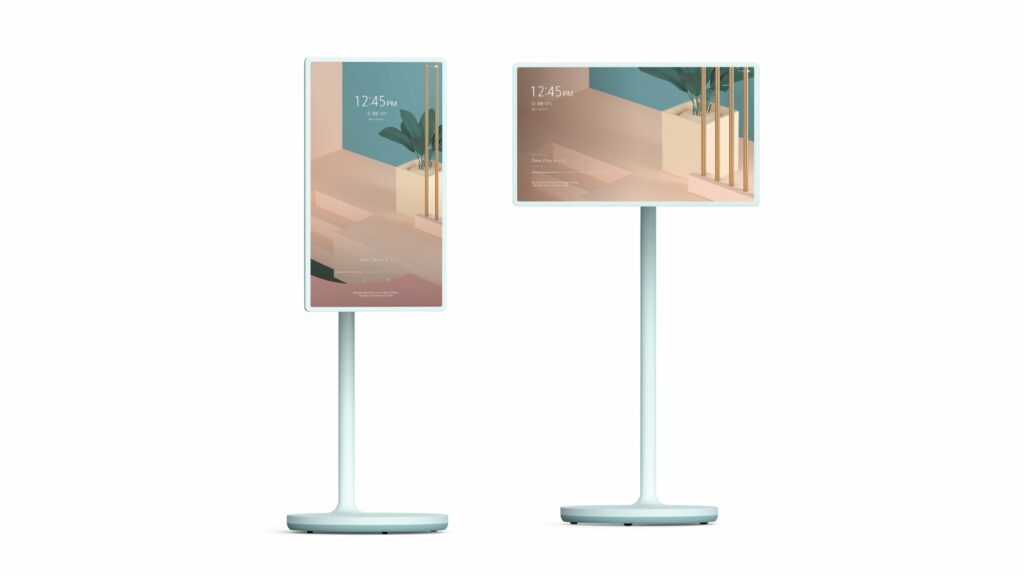
The second Lifestyle TV is the LG Art10, or StanbyME, which is a battery-powered LCD TV. According to LG, the battery has a runtime of up to three hours.
The 27-inch TV is attached to a movable stand, which allows it to turn, tilt and rotate. Furthermore, it can be adjusted in height and moved via rollers on the base. The LG Art10 can be controlled via remote, gestures and touch.
LG OLED EX – The new OLED technology
LG presented the new OLED EX technology shortly before CES2022. Deuterium is used here, which allows the panel to be reduced to a depth of 4 mm. In addition, new software ensures an improved image and a brightness increase of 30% compared to conventional OLED panels.
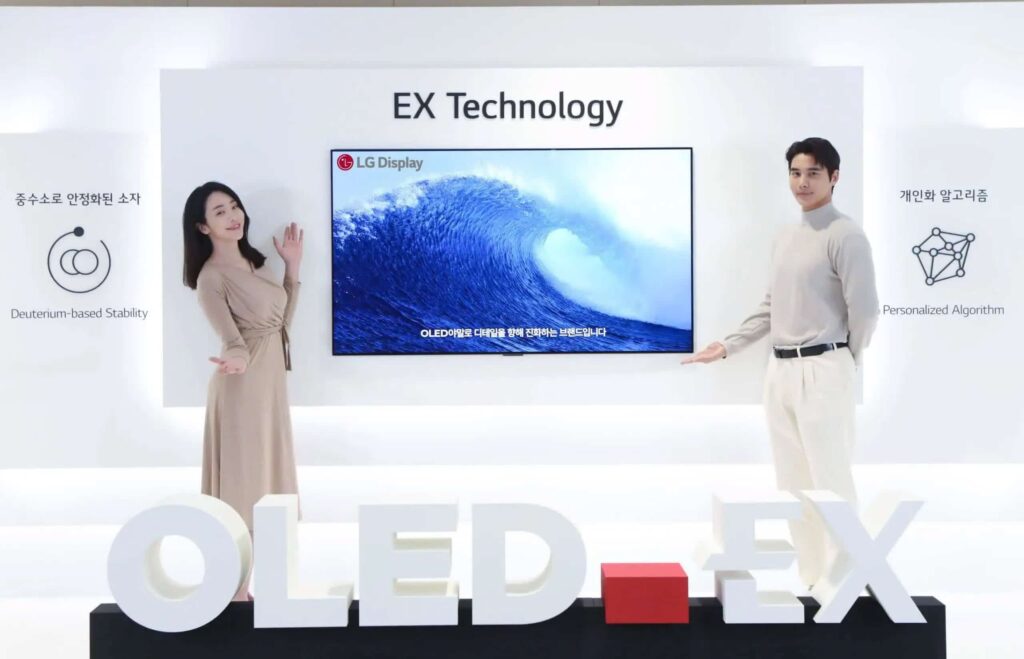
In addition to the thinner panel, the deuterium also ensures that the panel is more efficient and also more durable, which reduces the burn-in risk. In addition, the panel no longer dims down the brightness so drastically, which is an argument against buying current OLEDs. In this way, LG manages a balancing act between brighter, but still more durable OLEDs!
The new EX technology is expected to be used in OLEDs produced in South Korea and China in the second quarter of 2022.
Because LG is the manufacturer of all current OLED panels, Samsung, Sony, Philips or Panasonic could also use the new panel technology. So we can look forward to even brighter, narrower and longer-lasting OLEDs in 2022!
Samsung presents the new QD technology at CES 2022
Samsung is also known to have some innovations in the run-up, and the South Korean manufacturer is eagerly awaiting the QD technology in particular. A separate keynote took place on January 4.

Samsung line-up: QD technology and own OLEDs
The South Korean manufacturer Samsung is taking a new direction in its procurement routes and is said to have ordered up to four million panels from its archrival LG Display for the next year. Back in 2017, Bloomberg reported that Samsung had to ask LG for help because of shortages of LCD panels. As a result, several Samsung TV models, including the “Neo QLED” models from 2021, were equipped with low-contrast IPSIn-Plane Switching, type of LCD Panel LCD panels instead of the VAVertical Alignment, type of LCD Panel LCD panels that were previously found in Samsung TVs.
Since Samsung wants to introduce the new QD technology in time for CES 2022, LG Display has received larger orders for OLED panels. There is talk of three million Neo-QLED TVs and two million OLED TVs. It will be interesting to see which direction Samsung will ultimately take.
Samsung Neo QLED TVs remain at the top of the line-up
In 2022, Samsung continues to rely on the Neo QLED TVs with MiniLED backlighting as their top-of-the-line models:
| Samsung Neo QLED Lineup 2022 | 8K models | 4K models |
|---|---|---|
| Flagship model | QN900B | QN95B |
| Mid-range model | QN800B | QN90B |
| Entry-level model | QN700B | QN85B |
Samsung has announced that these models support not only 12-bit, but 14-bit HDRHigh Dynamic Range - image/video with more dynamic range (contrast range) mapping. This is supposed to ensure seamless brightness transitions, which are particularly noticeable in scenes with large areas of brightness.
Another new feature is the possibility to calibrate the TV conveniently from a mobile phone, regardless of whether it is a Samsung or iPhone device. With the help of a dedicated app, you can calibrate the TV to your preferences either in quick mode in around 30 seconds or in professional mode in around 10 minutes.
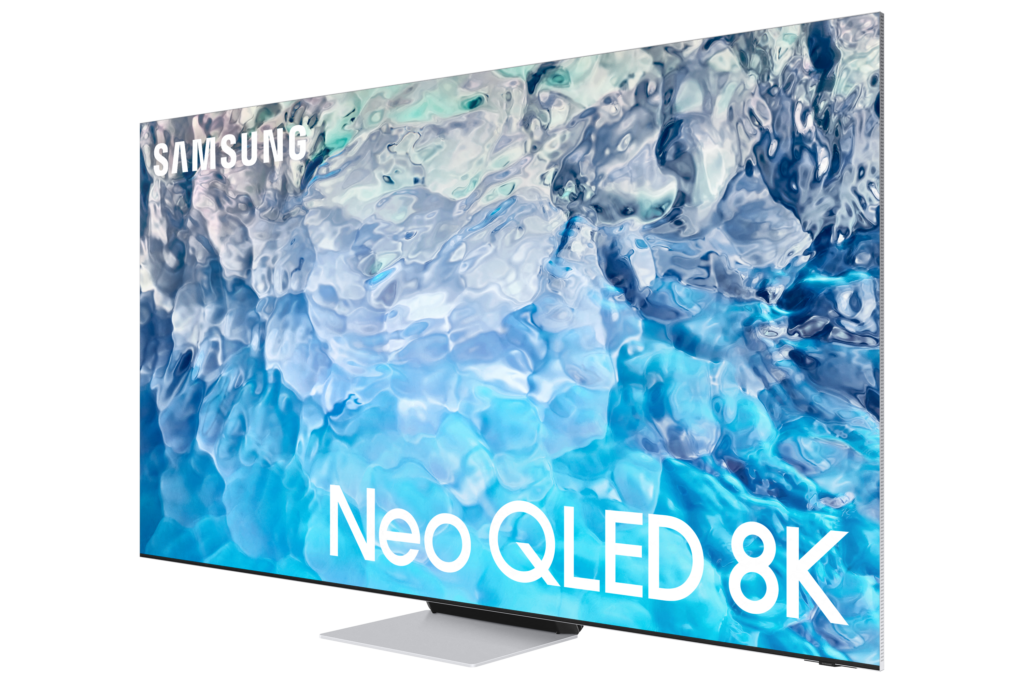
There is also news for all gamers, as the 2022 Samsung Neo QLED TVs support 144Hz gaming. This falls under the emphasis for PC gaming with a suitably good graphics card and HDMI2.1 connection, making 4K@144Hz gaming possible on these screens in the future.
Speaking of gaming: Samsung is now using a new homescreen design that functions as a smart hub and also supports an integrated gaming hub. The focus here is on cloud gaming services such as GeForce Now or Google Stadia.
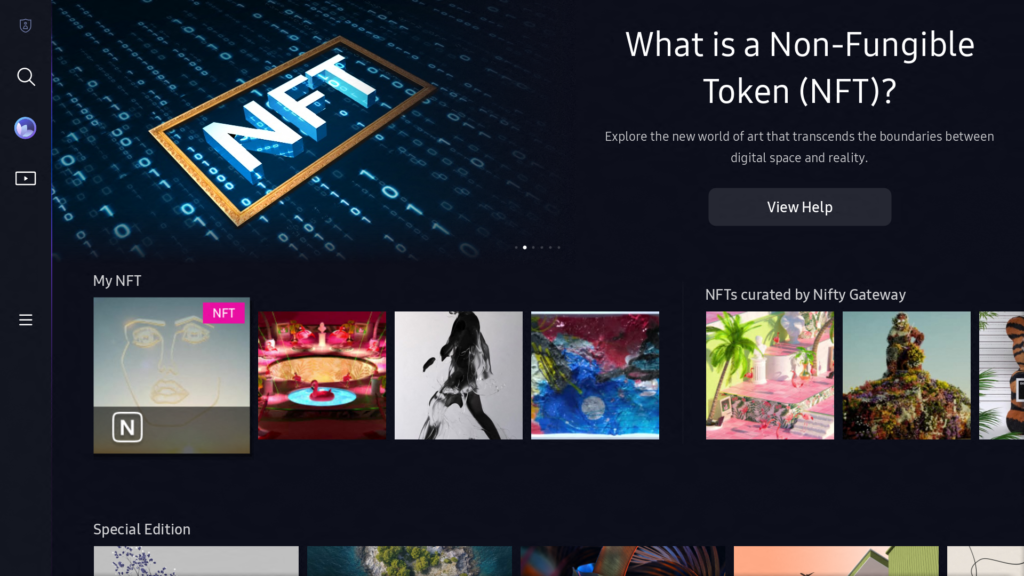
But the new Smart Hub also features a new Watch Together function, the Smart Calibration already mentioned, and a dedicated NFT platform.
The latter serves as an intuitive, integrated platform for discovering, buying and trading digital artworks (NFTs)
Samsung is also upgrading the sound quality of its TVs. Flat screens are often known for their mediocre sound quality, which is why Samsung wants to deliver Dolby AtmosObject-based surround sound format with 3D-Sound from any direction natively with its TVs this year. Two speakers are used on each side of the TV, which promise immersive Dolby Atmos sound – but Dolby VisionDynamic HDR-format with a color depth of up to 12 Bits and Mastering of up to 10,000 Nits is still missing from Samsung TVs this year.
Samsung MicroLED TV in up to 110 inches
In addition to news about the Samsung Mini-LED TVs, there is also first information about the 2022 MicroLED line-up from Samsung.
The Samsung MicroLED TVs will be available in 89, 101 and a massive 110 inches and it definitely catches the eye with its Art Mode, which allows pictures to be permanently displayed like a gallery.
In addition, the Samsung MicroLED TVs, as well as the Samsung Mini-LED TVs, will also receive Dolby Atmos out of the box for the first time.
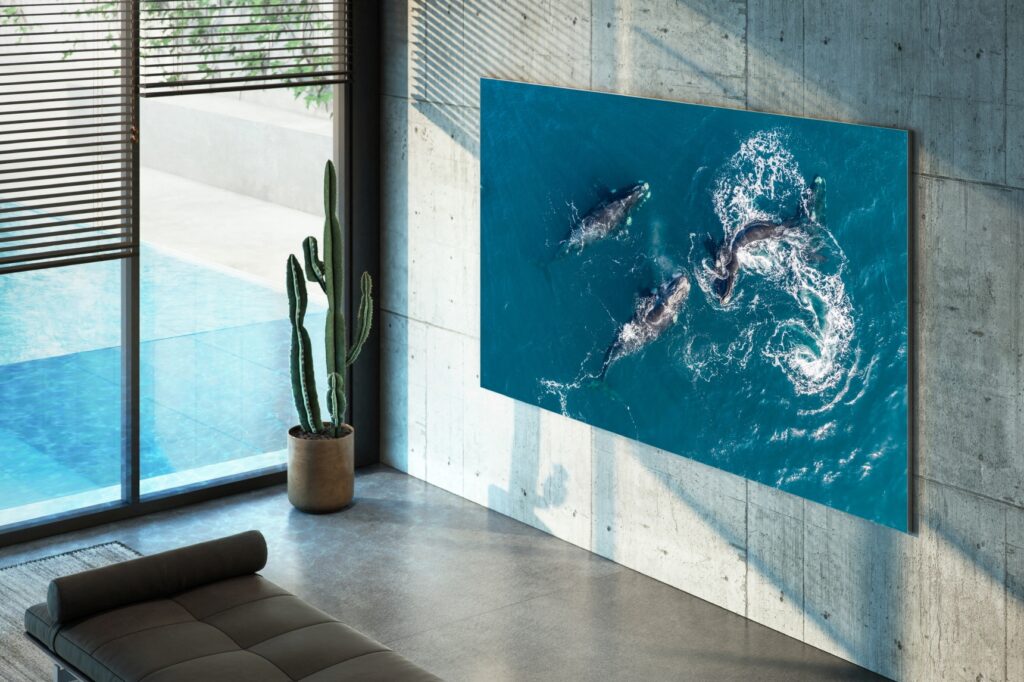
With a peak brightness of 2000 nitsSI unit of luminance: 1 nit = 1 cd/m2 - The best way of measuring and comparing a TVs brightness , 100% DCI colour space coverage and 20-bit greyscale depth, Samsung also wants to give this year’s OLED competition a run for its money – even if the current price is only affordable for very few consumers.
Improvement of the 2022 Samsung Lifestyle TVs
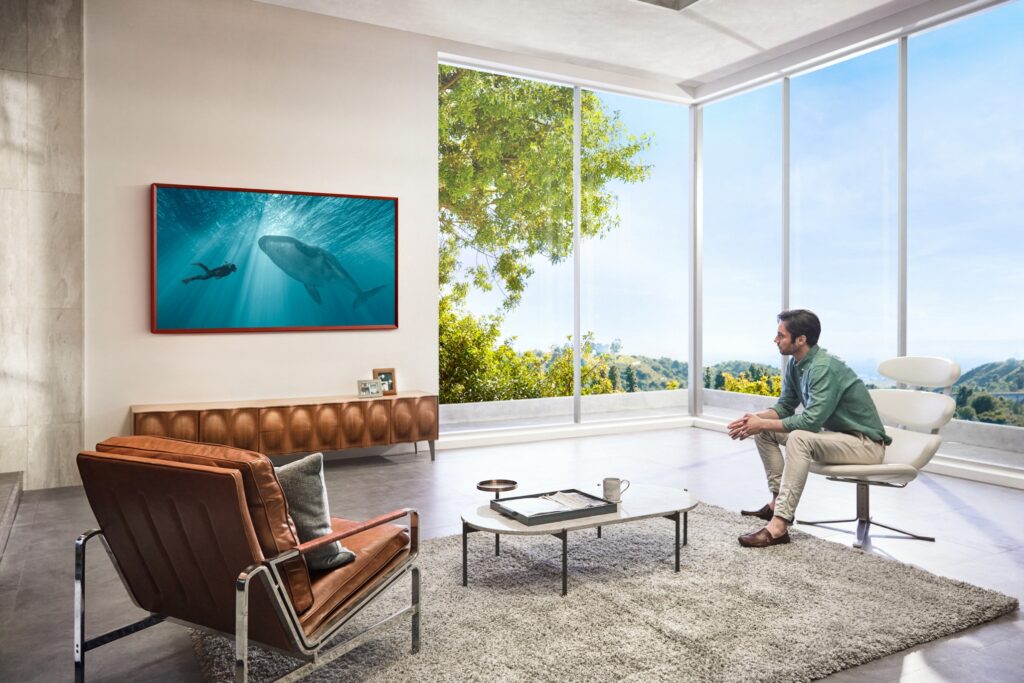
Samsung’s lifestyle TVs in 2022 will also be improved on the previous year’s models. A new, matt display with anti-glare, anti-reflective and anti-fingerprint properties is touted. This display is not only limited to The Frame 2022, because The Serif 2022 and The Sero 2022 will also be equipped with it.
Furthermore, The Serif 2022 gets a 65 inch size and The Sero 2022 gets the vertical Multi View function. This allows different content to be displayed above and below the screen – for example, Netflix above and Instagram below.
Sony CES 2022: The world’s first QD OLED-TV
Sony also relies on the new QD technology for their OLED TV and they presented the world’s first QD OLED TV, ahead of Samsung. In addition, Sony takes its successful models from 2021 to the next round. Their press conference took place on January 4.

Sony 2022 OLED Lineup
According to rumors, Sony will continue the current A80J and A90J model series, with two more models to be added to the lineup. Accordingly, the new OLED models will have the names A80K, A85K, A90K and A95K and will partly be equipped with the new QD OLED panels:
| Sony OLED Lineup 2022 | A80K | A90K | A95K |
|---|---|---|---|
| 42 Zoll | OLED42A80K | ||
| 48 Zoll | OLED48A80K | ||
| 55 Zoll | OLED55A80K | OLED55A90K | QD-OLED55A95K |
| 65 Zoll | OLED65A80K | OLED65A90K | QD-OLED65A95K |
| 77 Zoll | OLED77A90K | ||
| 83 Zoll | OLED83A90K | ||
| 97 Zoll |
So, the speculations before CES2022 have come true and the Sony QD-OLED A95K is indeed this year’s flagship model of the Japanese group. The difference between QD OLEDs and regular WOLEDs is mainly that this OLED technology can get brighter again and ensures a broader color representation.
The 2022 Sony OLEDs also feature the infamous XR Cognitive Processor, two HDMI2.1 interfaces with 4K@120Hz and the Google TV OS. Going further, these models naturally fall under Sony’s “Perfect for PS5” label, allowing the in-house console to be fully utilized.
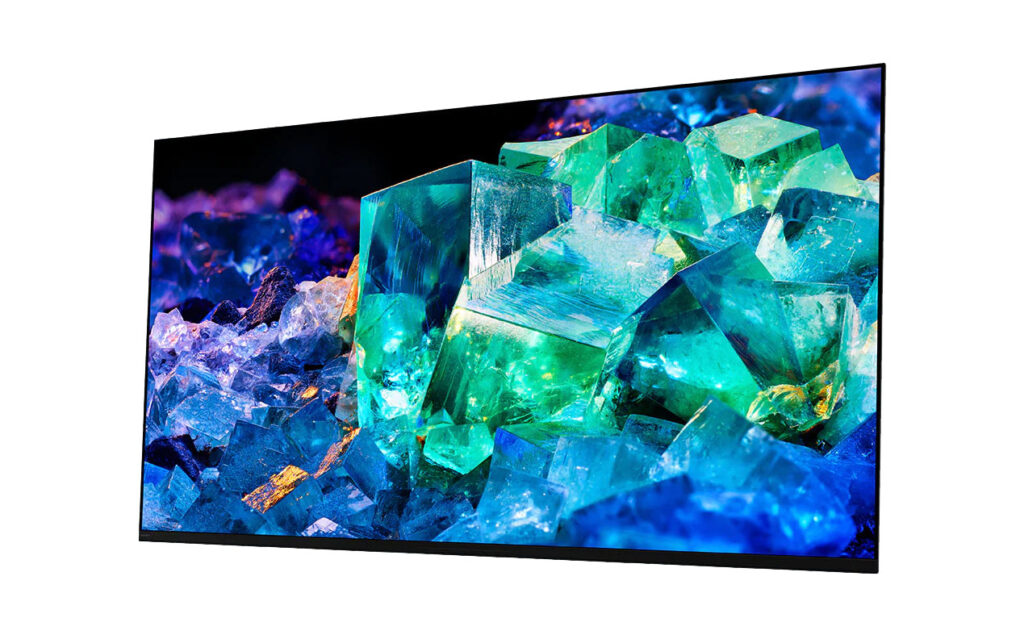
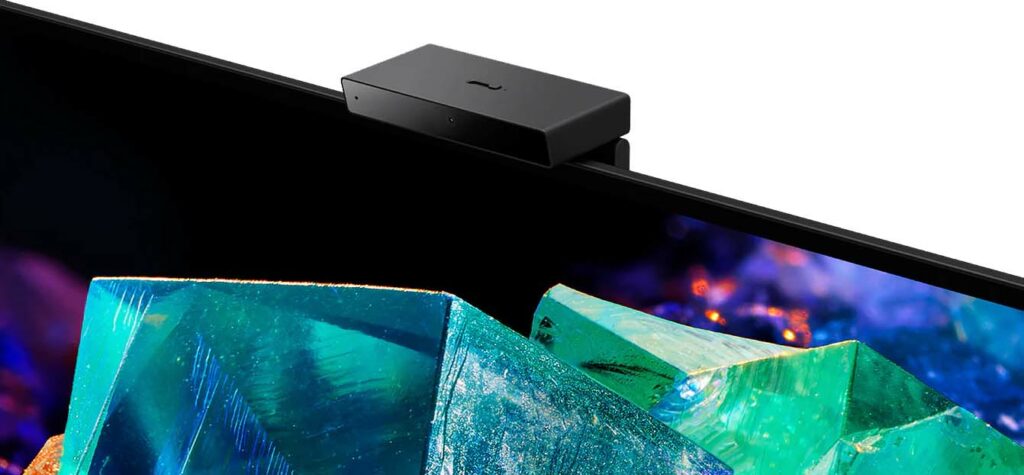
Another innovation is the Sony Bravia Camera. It allows the OLED to automatically optimize the picture to the ambient brightness or recognize where the viewer is sitting and adjust the volume accordingly. In addition, the TV can be controlled with gestures or the camera can be used for a video call.
The Sony Bravia Camera is already included with the Sony QD-OLED A95K and is available separately for the other models in the lineup.
Sony 2022 LCD-TV-Lineup
The LCD TV lineup will also be expanded in the style of the OLED lineup, and last year’s J will be replaced with the suffix K, which means we can look forward to the Sony X80K, X85K, X90K, X95K and Z9K model series:
| Sony LCD-TV Lineup 2022 | X80K | X85K | X90K | X95K | Z9K |
|---|---|---|---|---|---|
| 43 Zoll | 43X80K | 43X85K | |||
| 50 Zoll | 50X80K | 50X85K | |||
| 55 Zoll | 55X80K | 55X85K | 55X90K | ||
| 65 Zoll | 65X80K | 65X85K | 65X90K | 65X95K | |
| 75 Zoll | 75X80K | 75X85K | 75X90K | 75X95K | 75Z9K |
| 85 Zoll | 85X80K | 85X90K | 85X95K | 85Z9K |
But not only the name change is similar to the OLED lineup, because Sony’s LCD TVs are also equipped with the Google TV OS and the same remote control. Furthermore, you can also use the optional Sony Bravia Camera on these models, but it has to be purchased separately.
It is certain that the Sony X95K as well as the Sony Z9K have been equipped with a Mini LED backlight with Full Array Local Dimming. These mini LEDs are supposed to be controlled even more precisely in combination with the XR Backlight Master Drive, which reduces blooming to a minimum on the one hand, and no contrast or brightness is lost on the other.
The Sony X90K, on the other side, no longer has Mini LEDs, but regular FALD. The entry-level models Sony X85K and Sony X80K only have a Direct LED backlight in comparison.
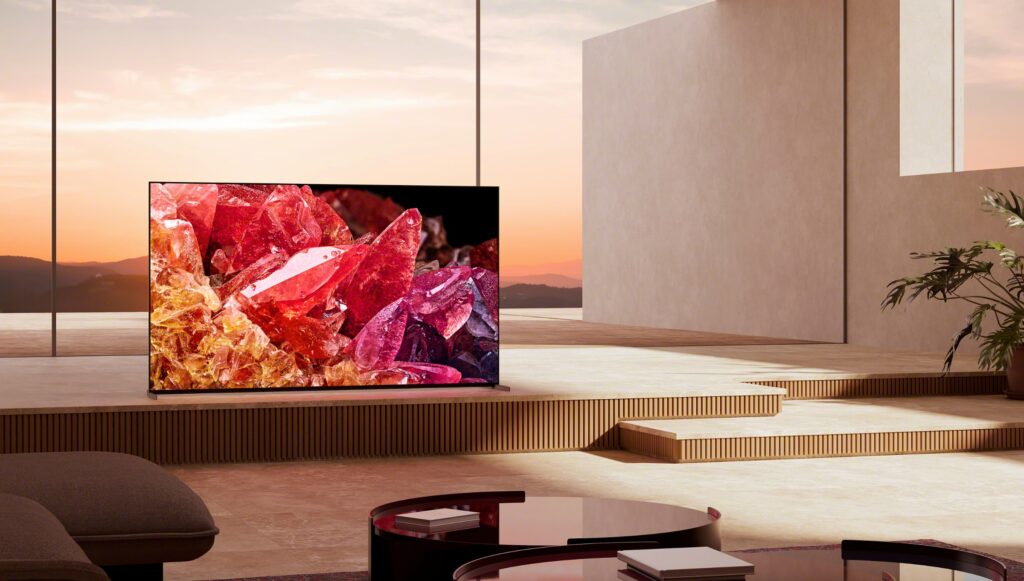
Panasonic CES 2022: New and even better OLED panels
In a separate press conference on January 4, Panasonic has had the opportunity to present the new models, whose predecessors have meanwhile turned into one of the best OLED TVs on the market.

Looking back to 2021, Panasonic will introduce a new premium OLED like the JZW2004, which comes with an improved OLED panel and which offers more efficient heat dissipation.
Panasonic LZ2000 OLED as new flagship model
Panasonic seemingly wanted to start CES2022 in an imposing way, as the Japanese electronics company’s first TV announcement revolved around their top-of-the-line Model of the 2022 lineup.
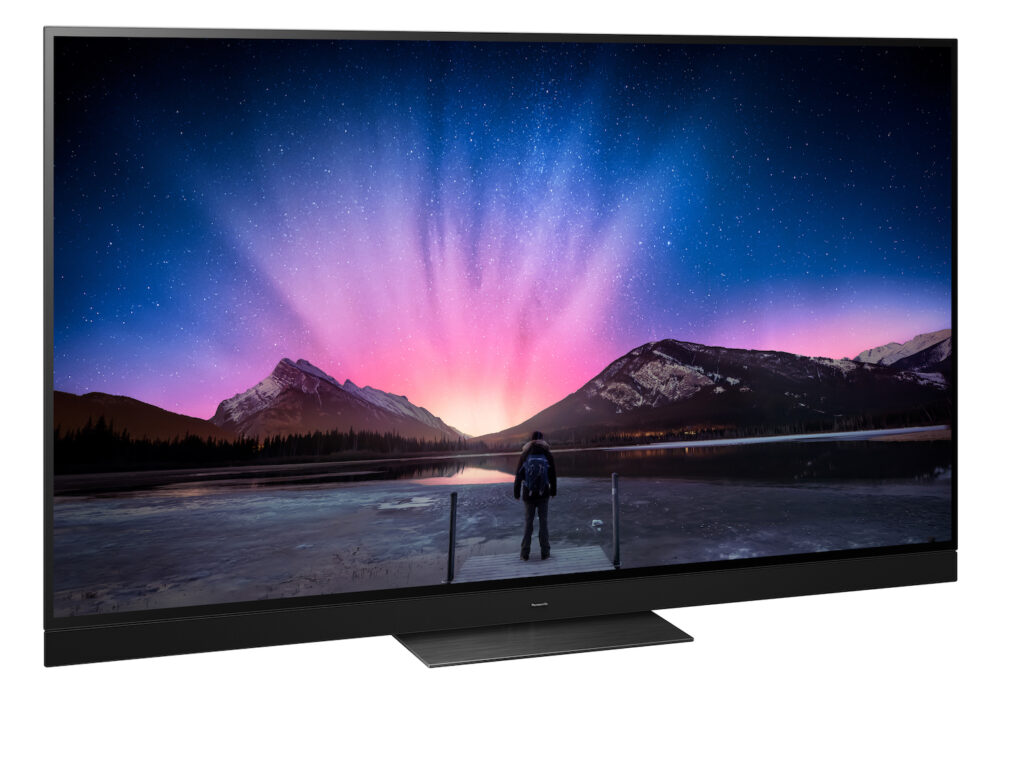
Panasonic’s flagship model also relies on the proven OLED panel in 2022, this year with the “Master OLED Pro” label of the 2022 generation. According to Panasonic, the LZ2000 has an optimized panel with even better control over the individual picture parameters, as well as increased brightness.
In addition, there are already integrated gaming features, such as 4k@120Hz and a variable refresh rateHertz is the derived SI-unit of frequency with 1Hz=1/s - When talking about TVs this means how many different pictures a TV can display in one second. via HDMI VRRVariable Refresh Rate - synchronizes the display's refresh rate with the output refresh rate of the graphics card and AMD FreeSyncVariable Refresh Rate with AMD graphics cards or consoles, which first had to be added via update in the JZW2000.
Panasonic also came up with a similar idea to the competition and integrated a new “Game Control Board” by allowing the user to customize the gaming features.
As for the sound of the new OLED, Panasonic wants to build on the already excellent template of the JZW2000. The main difference to last year’s model is the speaker front, which now consists of several small speakers instead of one. Sensors are also supposed to detect the perfect sound for the respective environment, but also adjust the picture accordingly.
As in the years before, Panasonic can still be praised for the implementation of HDR formats, because whether HDR10+License-free, dynamic HDR-format in competition with Dolby Vision Adaptive or Dolby Vision IQDynamic HDR-format with a color depth of up to 12 Bits and Mastering of up to 10,000 Nits, which can adapt to the ambient brightness — you are fully equipped when it comes to High Dynamic Range formats.
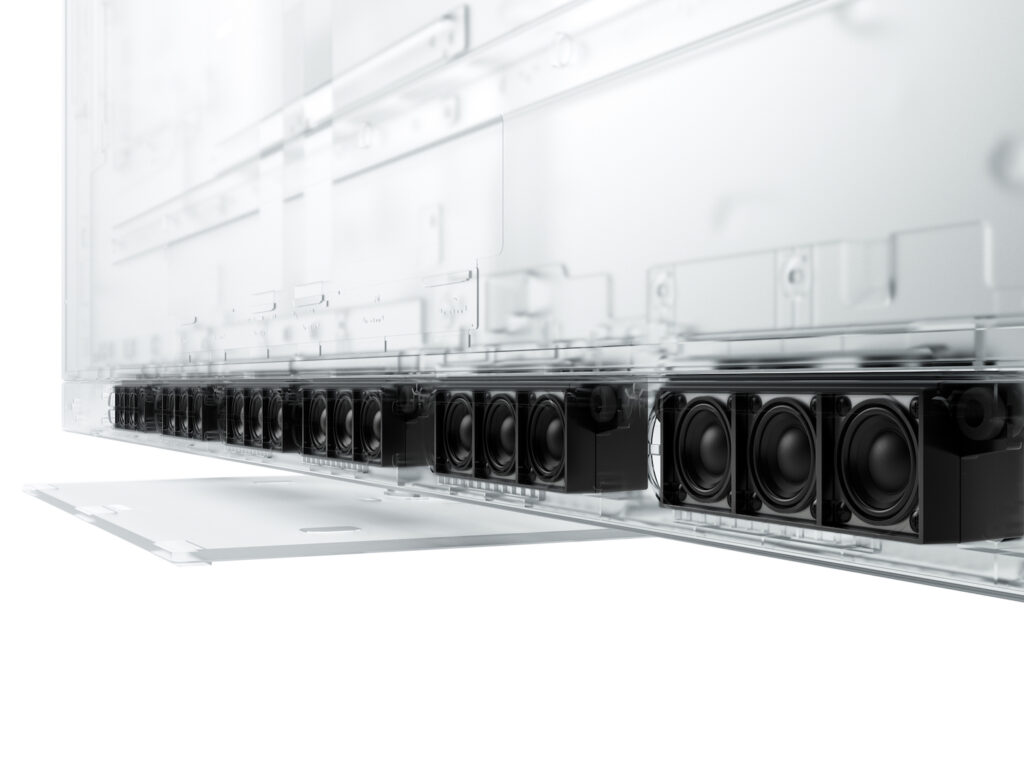
The Panasonic LZ2004 will be available in 55, 65 and, for the first time, 77 inches.
Hisense at CES 2022: HDMI 2.1 and Dolby Vision IQ
Hisense already presented their new models for Australia in mid-December, which are supposed to be even better than the ones from last year. Among them are the popular ULED models, but they have nothing in common with OLED technology. The Hisense press conference took place on January 4.

Hisense continues to become the price-performance winner, and it will be interesting to see whether the manufacturer can maintain this level. All models are supposed to have HDMI 2.1 and Dolby Vision IQ, and an 8K model with Mini LED technology has already been revealed.
Hisense 2022 TV-Lineup
This year, the models no longer have the suffix G, but H, which means that the U6H, U7H, U8H and the new U9H —with a resolution of 8K and Mini LEDs — represent the new 2022 Hisense lineup. Unfortunately, these models are only valid for the American region and we are curious what alternatives Hisense has up its sleeve for the European market.
TCL CES 2022: Mini LED and 8K resolution
TCL also focuses on a new 8K range with Mini LED technology, including Onkyo speakers for a room-filling sound.
TCL is a big name when it comes to TVs, especially in America. The European models do not have to hide behind the big names of the competition and the 2021 models were already convincing.

M-Series Quantum X with 240Hz QLED display
TCL also unveiled its latest TV at CES2022 in the form of the M50QXM-K01, or “M-Series Quantum X“. The biggest novelty here is the 240Hz-display and a VRR at 48-240Hz.
This makes the TV suitable for Playstation 5 and Xbox Series X in terms of refresh rate, although they can only scratch the maximum FPS number. PC gamers with a corresponding graphics card, on the other hand, are offered a frame rate that is unmatched by other manufacturers.
Furthermore, the TV is said to have a QLED-display with full array local dimming and an Auto Low Latency Mode is also supported for maximum convenience.
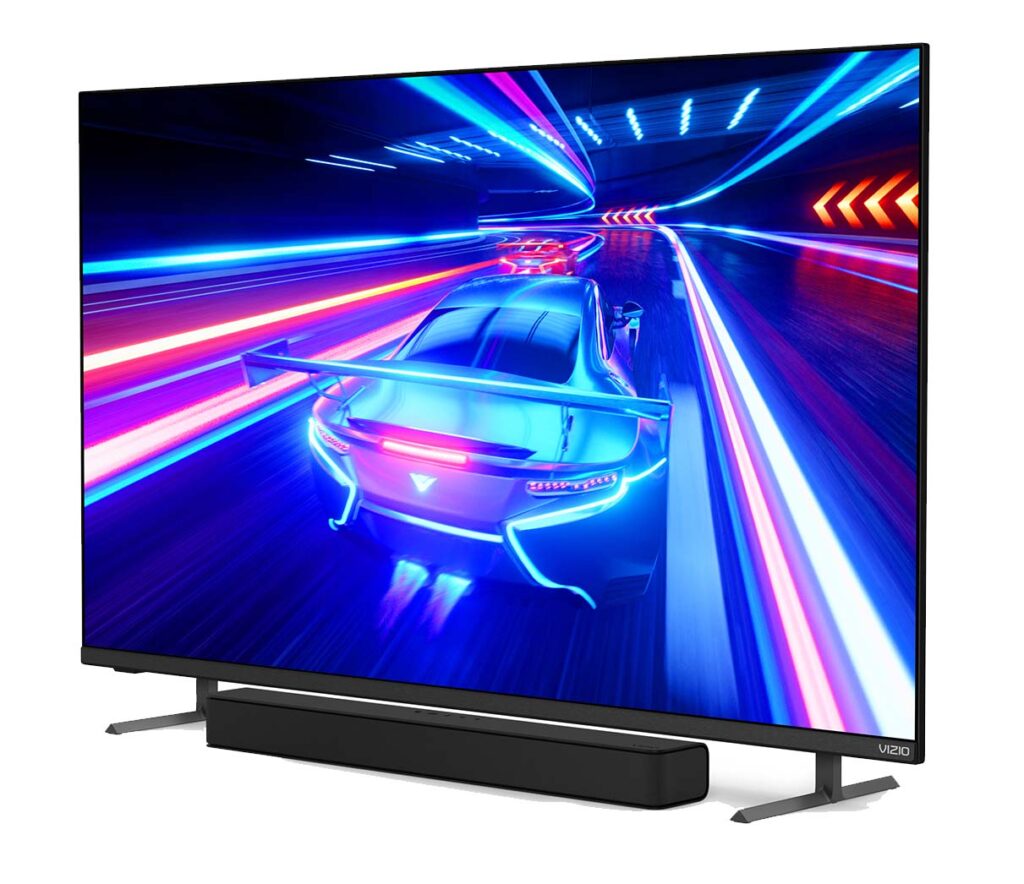
This page will be continuously expanded and filled with the latest information as it becomes available.

tvfindr Editorial
As a studied technology journalist Tobi likes to write regularly about the colorful world of TV sets & Co. Further interests: Music, cars, gaming, soccer
